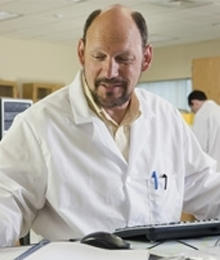An interview with Connor Bamford
October 2020
Connor Bamford is a Wellcome Institutional Strategic Support Fund (ISSF) Fellow at Queens University, Belfast and a member of the Microbiology Society. In this interview, he tells us more about the importance of CRISPR-Cas and its impact on the world of genetics.

Tell us more about your research.
I am a research fellow at Queen’s University, Belfast and I'm interested in finding the genes that govern the outcome of viral infections in people. Why then, do I care so much about the antiviral defence system known as CRISPR-Cas, which is found in prokaryotes? Well, CRISPR-Cas helps me understand human immunity by letting me easily test whether a gene is important by removing it from human cells.
What is CRISPR-Cas?
CRISPR (Clustered Regularly Interspaced Short Palindromic Repeats)-Cas (CRISPR-associated systems) is a prokaryotic adaptive immune system. Accidentally discovered in 1987 by Ishino et al., while sequencing E.coli, CRISPR can be found throughout the prokaryotic tree of life. Nearly fifteen years later, Cas genes were later characterised, and experimental evidence for the role of CRISPR-Cas in antiviral defence was provided by Barrangou et al., in 2007.
Why is the discovery of CRISPR-Cas systems so fundamental to microbiology?
CRISPR-Cas pathways manipulate and capture genes from viruses and plasmids, inserting them back into their own DNA and even retrieving those sequences to target antiviral Cas proteins to incoming parasitic gene sequences. Pioneering work by the groups of Jennifer Doudna and Emmanuelle Charpentier demonstrated how Cas9 cleaves DNA directed by RNA ‘guides’ encoded by CRISPR elements and how this could function as a gene-editing tool. Not long after, work by Feng Zhang and George Church groups optimised CRISPR-Cas9 to allow it to work in human cells to cut – not viral or plasmid DNA – but our own DNA.
Cuts to both strands of DNA induce error-prone repair systems that can introduce mutations that may lead to inactivation (knock-out) of the gene by inducing a frameshift. In some instances, the cut gene can be safely repaired – and even deliberately modified – when provided with a template; this is called knock-in.
Gene editing is an incredibly powerful tool used in nearly all fields of modern biology not least immunology, but it can also be applied to medicine in the form of gene therapy to cure devastating human illnesses like Huntington’s disease. However, with great power comes great responsibility and reports of gene-edited human babies being born in China through work by now disgraced and imprisoned He Jiankui have raised significant ethical quandaries regarding the future of CRISPR-Cas outside of basic science.
Why does microbiology matter?
Microbiology matters because by learning about the most abundant and diverse forms of life on Earth, we are discovering whole new realms of biology and exciting pathways to turn this knowledge into means to help humanity and the planet.


